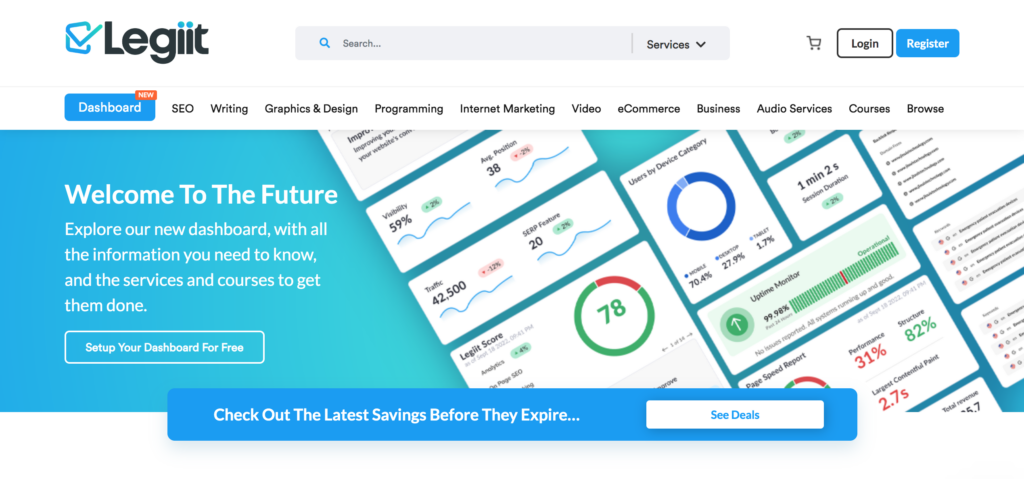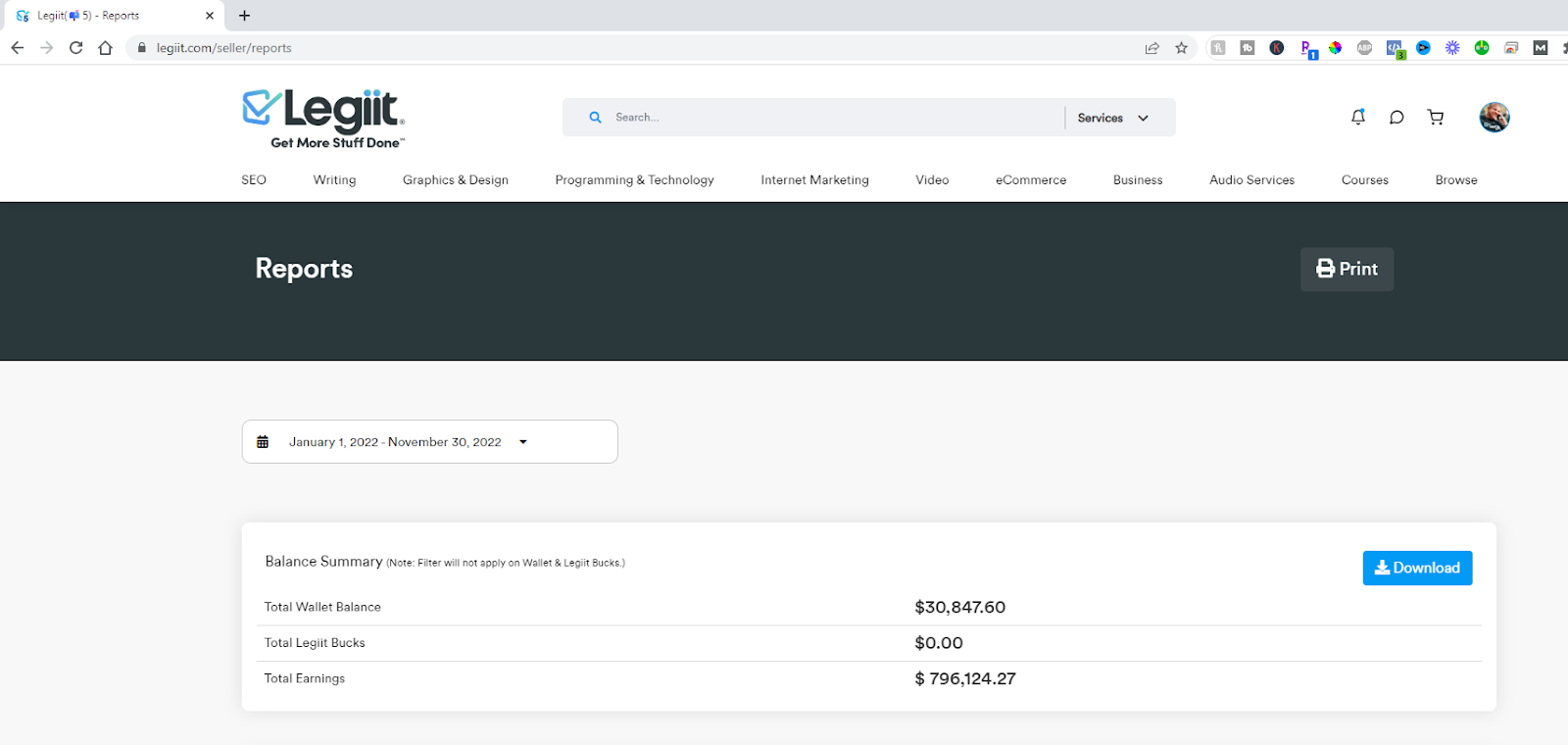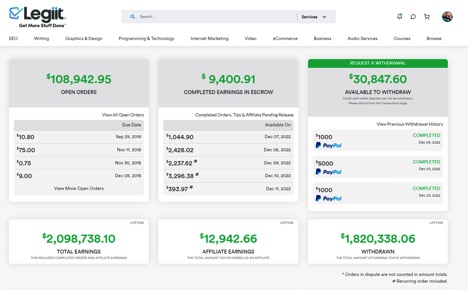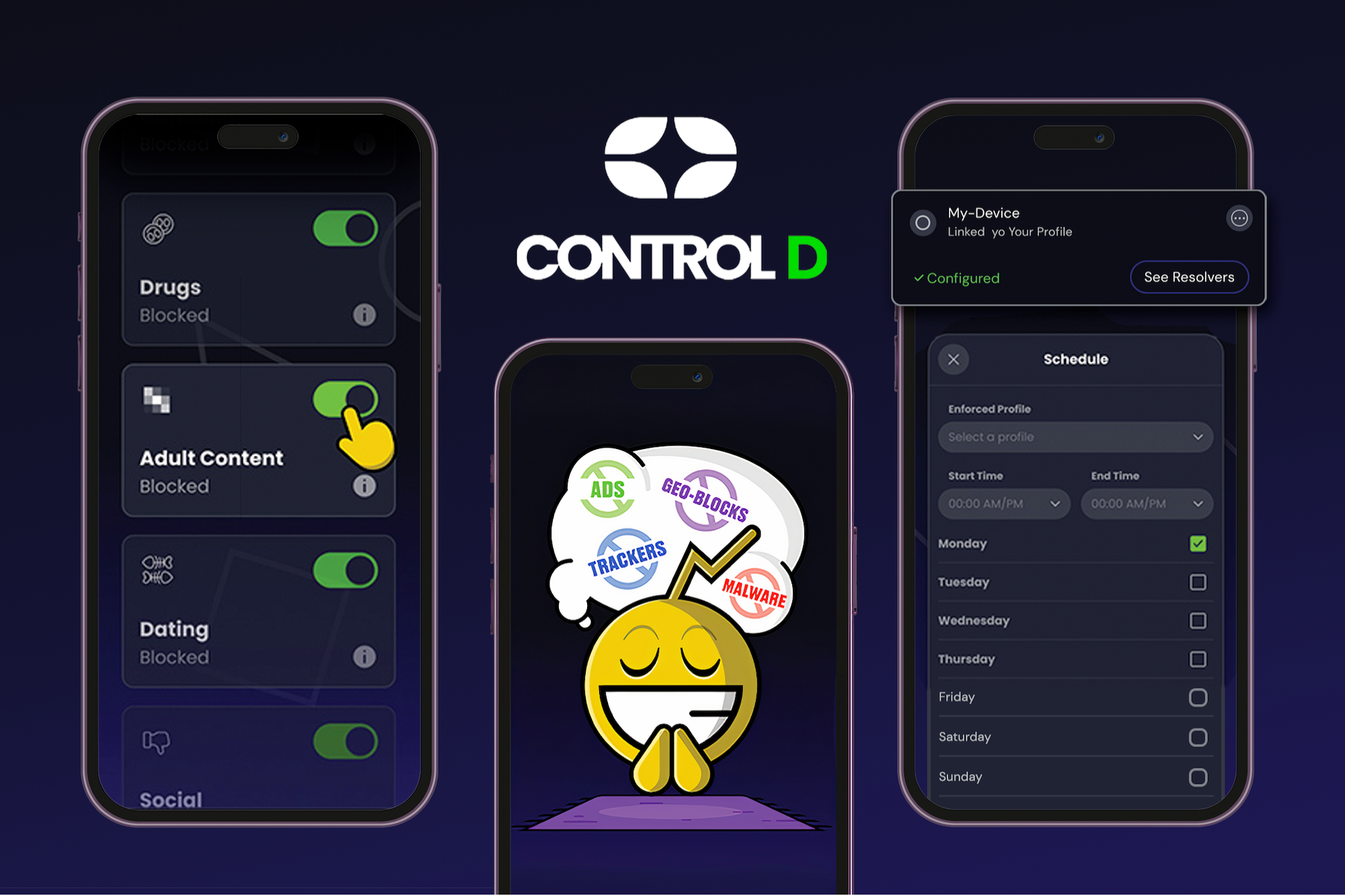AFFILIATE MARKETING
This 44-Year-Old is Earning +$140k/Month Selling Agency and Marketplace SEO Services

For Chris Walker, one thing was very clear from the beginning: he wanted to have complete autonomy over his life. That meant what he was going to do, the decisions he was going to be making, how he would be making money, and how he was going to live.
Although he started out with a regular day job, a chance encounter with an affiliate marketing blog changed his life entirely. Eventually, when he felt he had outgrown his 9 to 5, he took the plunge and focused all of his energy on his own businesses.
Today he runs the agency Superstar SEO, the online marketplace Legiit, and has several other income streams, bringing in +$140k/month. While Chris has found the financial and professional freedom he was looking for, he’s most proud of the positive ways that his businesses have impacted other people.
Keep reading to find out:
- How he discovered SEO and affiliate marketing
- What his breakthrough moment was
- How he’s developed his presence on multiple platforms
- Why and how he created Legiit
- How much he’s earning
- His main marketing strategy
- His (ironic) views on SEO
- How he builds links
- The content creation strategy that gets him results
- His favorite resources and tools
- The biggest challenge he’s faced
- His most notable accomplishment
- His greatest mistake
- The advice he would give to other entrepreneurs
Meet Chris Walker
I grew up in Myrtle Beach, SC. I was raised by a single mother who worked hard and set a great example for me, and supported me in everything I did. Even though we didn’t have a lot I never felt like I went without anything.
I started working various jobs starting at the age of 12. I eventually went to college for computer technology with the goal to be a computer programmer.
That never developed the way I wanted it to, though I did eventually work in the field.
Why He Created Superstar SEO
After college, I did ok but never had the kind of money that I wanted to make, and not enough to pay off the debt that my degrees got me.
One day I decided to check out a blog that I used to read to see what happened to it and found it had been replaced by a 1-page website from the owner talking about how he didn’t keep up with it anymore and that he was now making a full-time living doing affiliate marketing.
This was around 2013. I’d never heard of it before, but I was intrigued. I started reading Warrior Forum, Blackhat World, and whatever else I could find.
That eventually led me to a course called Bring The Fresh, which taught me how to make affiliate sites, and I launched my first site, not even knowing that what I was doing was called “SEO” but having success at it nonetheless and started making money from it. The site is still around but no longer ranks for anything and has been neglected for years.
I was hooked at this point… until Penguin 3.0 made me lose the rankings for that site.
After that, I got on to another course called Source Phoenix. This was very expensive for me at the time, which was important because it forced me to have to make it work.
I launched more affiliate sites and did ok with them, but I also got into client SEO for the first time.
As time went on, the SEO business grew between client and affiliate, but the big breakthrough came in 2015 when I made my first freelance SEO service sale.
This was on a marketplace site and was a $10 service that I resold from Fiverr. This was pretty much the moment everything changed for me.
That business quickly blew up for me, making me hundreds, then thousands, then 10s of thousands of dollars a month.
Between this and my clients and affiliate sites, I was able to quit my job and focus on Superstar SEO full time.
Unfortunately, the marketplace site I was working on started having many problems, crashing, getting hacked, etc…
Fortunately, I had the foresight to build a customer list. Both a Facebook group (which now has around 80k members), an email list, and a YouTube channel.
I used that list to start making sales through my own website. Then I had freelancers from the site I had been making sales from asking if they too, could list their services on my site.
That’s when I partnered with a customer who owned a development agency to launch Legiit, which has been my focus for the last 5 years and has led me to be able to grow SEO training, software, and consulting.
Legiit is the #1 SEO marketplace now, and it all started with Superstar SEO.
How Legiit Works
The easiest answer is that it started as a 2-way marketplace for customers to find B2B services they need that are provided by freelancers. Now it has expanded into a complete ecosystem/platform for online business, providing a suite of interactive tools that use AI and other technology to make running an online business push button simple.

It also has built-in course hosting and separate SaaS tools for lead generation like Legiit Leads and others under development.
How Much Chris is Making
For complete transparency, Superstar SEO is no longer my main business and Legiit is the focus… but it still does very well, largely on autopilot.
I have several income streams from it that include:
- Freelance services on Legiit. I’ve sold over 2 million dollars lifetime there, with $730,000 coming in 2022 alone.


This is what I make as a freelancer on Legiit, not as the platform owner.
- Client SEO – This makes me around $20,000 per month, sometimes more, sometimes less
- Affiliate SEO/deals – This makes around $5,000 per month… sometimes more if I promote something
- Audiit.io and SEO software I own, which makes around $3,500 per month
- Superstar SEO Academy, which makes around $5,000 though it had been as high as 30k per month at points
- Misc. things make around $1,000 – $2,000
Chris’s Top Marketing Strategy
I call it the celebrity method. Make as much content as possible, and run paid ads to it to make yourself into an authority or “celebrity” that people come to for whatever you sell, SEO in my case.
Most people just email, DM, etc… or wait for people to find their website. I find that by making myself into an authority I’ve managed to stand out.
His Views on SEO
Honestly, the only SEO I focus on for Superstar SEO/”Chris M. Walker” is branded search and some blogging. It’s honestly pretty low down the priority list for Superstar SEO and only brings in top-of-funnel traffic usually…
Ironically, I just don’t find SEO a great way to promote an SEO business. It is very important for Legiit though… but that’s a bit beyond the scope of this piece.
Link Building
Link building is the #1 ranking factor. There are two types of people on this… people that agree and people that are wrong.
Lately, I have been using many extremely high-authority PR links… placements in Maxim, Men’s Journal, Hackernoon, and so on. That, combined with HARO, guest posts, niche edits, and PBNs can really move the needle. For clients, I like to build a link foundation with social profiles and web 2.0 before going to those.
As for what hasn’t worked… it’s hard to say. There are things that used to work really well like blog comments, that are less effective now, so it’s hard to classify something as “hasn’t worked” when I’ve seen various times when things worked and then later didn’t.
His Email List
I ask all my customers on Legiit for their email when I deliver their order. I make offers to my Facebook group, I have a pop-up on my site, and I run ads to lead magnets… that still works very well. The email list is like a push-button money machine when used right.
Chris’s Content Creation Process
These days I focus on ranking YouTube videos. I can rank pretty much any term I want in YouTube search, so I just make good videos, and they drive me a ton of traffic.
Here’s an example. This video is ranking #1 in YouTube search for SEO 101:
When it comes to keyword research, I pick the hardest keyword that a site would benefit from and rank that. It usually pulls the others along with it when done right.
Achieving Current Revenue Levels
With Superstar SEO, my current level of revenue is not my peak level of revenue, so this is tough to answer, but I think I got to 100k months in 2-3 years.
His Top Resources
I don’t watch much SEO content anymore, but I like Niche Pursuits a lot, and Buildapreneur is great for affiliates also.
Overall though, I find it better to watch what someone does. rather than the content itself. I find that to be where you get the best information.
His Favorite Tools
The most underrated tool in the world is Freedcamp. My Director of Operations and I have been using it since 2016 and it just does not get the love it deserves. It manages our tasks, lets us know who is working on what, where they are in the process, communicates about issues or questions, etc.
Beyond that, the staples:
We’ve also gotten very good at Pitchbox.
His Main Challenge
Legiit has been far more challenging than Superstar SEO, but overall the biggest challenge in business, I think, is the uncertainty. I always say that I am one bad day away from losing everything and having to go back to a job. That’s a fear, but it’s a real one, and it keeps me motivated.
His Greatest Accomplishment
The number of people who have achieved financial independence through Legiit, whether as a freelancer or as a customer helping their clients or themselves. I literally get choked up when I think about it. It’s the best thing I’ve done in my life.
What He Wishes He Knew When He Started
I wish I had known about the importance of personal branding/content. If I had started that day 1, rather than day 500 or so, I’d be years further along.
His Biggest Mistake
My main mistake has been trusting the wrong people.
His Advice for Other Entrepreneurs
Keep your personal expenses as low as possible so that you can invest in your business, take more chances, and not be in trouble in lean periods.
AFFILIATE MARKETING
How to Control the Way People Think About You
Opinions expressed by Entrepreneur contributors are their own.
In today’s digital age, where personal branding and public perception play a vital role in success, strategic PR efforts have become more important than ever. Ulyses Osuna, the founder of Influencer Press, joined our show to share valuable insights on the significance of PR, the evolving landscape, and the keys to achieving business growth while maintaining a fulfilling personal life.
One of the key takeaways from the conversation was the importance of strategic PR efforts in building a personal brand and shaping public perception. Ulyses emphasized that PR is not just about getting media coverage; it’s about controlling the narrative and shaping how others perceive you. By strategically positioning yourself and your brand through effective PR, you can influence public opinion and establish yourself as an authority in your field. Another crucial aspect discussed was the power of leveraging relationships and connections.
Ulyses highlighted the “Buglight Concept,” which involves utilizing the support and connections of others to achieve success. By building strong relationships and leveraging the networks of influential individuals, you can significantly expand your reach and influence. Ulyses’s own success with Influencer Press is a testament to the power of connections in the PR world. While professional success is undoubtedly important, Ulyses also stressed the significance of balancing personal time and fulfillment. In the pursuit of business growth, it’s easy to neglect personal well-being and relationships. However, Ulyses emphasized that true success lies in finding a balance between professional achievements and personal happiness.
By prioritizing personal time and fulfillment, entrepreneurs can sustain long-term growth and avoid burnout. In the ever-evolving landscape of PR, Ulyses highlighted the need for a clear mission when seeking press coverage. He emphasized the importance of aligning your brand with a cause or purpose that resonates with your target audience. By having a clear mission and purpose, you can attract media attention that aligns with your values and goals, ultimately enhancing your brand’s reputation and reach. Additionally, Ulyses discussed the importance of pricing services correctly and finding the right balance between personal involvement and business scalability.
The conversation also touched upon the dynamics of client relationships and the impact of showcasing external support. Ulyses emphasized the value of building strong relationships with clients and going above and beyond to exceed their expectations. Furthermore, he highlighted the importance of showcasing external support, such as media coverage or endorsements, to establish credibility and attract new clients. Ulyses’s own podcast, The Blacklist, where he shares insights and interviews successful entrepreneurs, was also discussed. He explained that launching the podcast was a way to give back to the entrepreneurial community and share valuable knowledge.
By continuously learning from others and implementing breakthrough ideas, Ulyses emphasized the importance of immediate action and continuous improvement for business growth. In conclusion, strategic PR efforts are essential for building a strong personal brand and controlling the narrative in today’s digital age. By leveraging relationships, finding a balance between personal and professional life, and having a clear mission, entrepreneurs can shape public perception, expand their reach, and achieve long-term success. Ulyses Osuna’s insights serve as a valuable guide for those looking to navigate the ever-changing landscape of PR and personal branding.
About The Jeff Fenster Show
Serial entrepreneur Jeff Fenster embarks on an extraordinary journey every week, delving into the stories of exceptional individuals who have defied the norms and blazed their own trails to achieve extraordinary success.
Subscribe to The Jeff Fenster Show: Entrepreneur | Apple | Spotify | Google | Pandora
AFFILIATE MARKETING
Set Your Team up for Success and Let Them Browse the Internet Faster

Disclosure: Our goal is to feature products and services that we think you’ll find interesting and useful. If you purchase them, Entrepreneur may get a small share of the revenue from the sale from our commerce partners.
According to TeamStage, 31 percent of employees waste about a half hour each day, and the top 10 percent of them can waste as much as three hours in a day. Part of that might be attitude, but the other part might be hangups caused by internet speed and advertisements. To nip that lost time in the bud, consider equipping yourself or your team with a tool to help stay on task.
From April 15 through 21, this five-year subscription to Control D Some Control Plan is on sale for just $34.97 (reg. $120). This is the best price for this deal online. This tool is designed to help users browse and use the internet faster while also blocking ads.
Control D is described as a “one-touch solution” for taking control over the productivity of your computer and internet usage. The deal supports use for up to ten devices, and it empowers each user to block advertisements, enjoy faster browsing, and set internet safety rules and restrictions for kids.
Control D’s bandwidth is substantial. It can accommodate up to 10,000 custom rules, block more than 300 servers, support multiple profiles, and unlimited usage. This robust and well-designed tool is a reliable option for any business leader who wants to liberate themselves or team members from distractions online.
Control D is rated a perfect 5/5 stars on Product Hunt.
Remember that from April 15 through 21, this 5-year subscription to Control D Some Control Plan is on sale for just $34.97 (reg. $120)—the best price on the web.
StackSocial prices subject to change.
AFFILIATE MARKETING
Grab Microsoft Project Professional 2021 for $20 During This Flash Sale

Disclosure: Our goal is to feature products and services that we think you’ll find interesting and useful. If you purchase them, Entrepreneur may get a small share of the revenue from the sale from our commerce partners.
If you’re in charge of a business and you don’t have a clear understanding of how to approach projects in an organized and effective manner, that’s a problem. Like many leaders before you, consider leaning on software that’s designed to streamline the project workflow for companies representing a wide range of industries.
A rate that will only be available from April 19 through 22, you can get Microsoft Professional 2021 for just $19.97 (reg. $249).
This well-reviewed software comes with a range of pre-built templates that you can use to set your project off on the right foot. It supports a number of helpful functions like building complex schedules with varying timelines, auto-populating those schedules in instances where it can, and submitting timesheets that can be distinguished by project work and non-project work.
Some additional features of Microsoft Project Professional that can help entrepreneurs and their teams include what-if scenario generation capabilities. Microsoft Project Professional also allows you to sync projects on your local server with those online, which is massively helpful for remote teams.
Its comprehensive and well-curated offerings are part of why Project Professional is rated an average of 4.7/5 stars on the Entrepreneur Store.
Don’t miss this limited-time opportunity to make a worthwhile investment in your business for the price of a beer at the ball game.
A price that will only last from April 19 through 22, you can get Microsoft Professional 2021 for just $19.97 (reg. $249).
StackSocial prices subject to change.
-

 PPC4 days ago
PPC4 days ago19 Best SEO Tools in 2024 (For Every Use Case)
-

 MARKETING7 days ago
MARKETING7 days agoWill Google Buy HubSpot? | Content Marketing Institute
-
SEARCHENGINES7 days ago
Daily Search Forum Recap: April 16, 2024
-

 SEO7 days ago
SEO7 days agoGoogle Clarifies Vacation Rental Structured Data
-

 MARKETING6 days ago
MARKETING6 days agoStreamlining Processes for Increased Efficiency and Results
-
SEARCHENGINES6 days ago
Daily Search Forum Recap: April 17, 2024
-

 SEO6 days ago
SEO6 days agoAn In-Depth Guide And Best Practices For Mobile SEO
-

 PPC6 days ago
PPC6 days ago97 Marvelous May Content Ideas for Blog Posts, Videos, & More















You must be logged in to post a comment Login